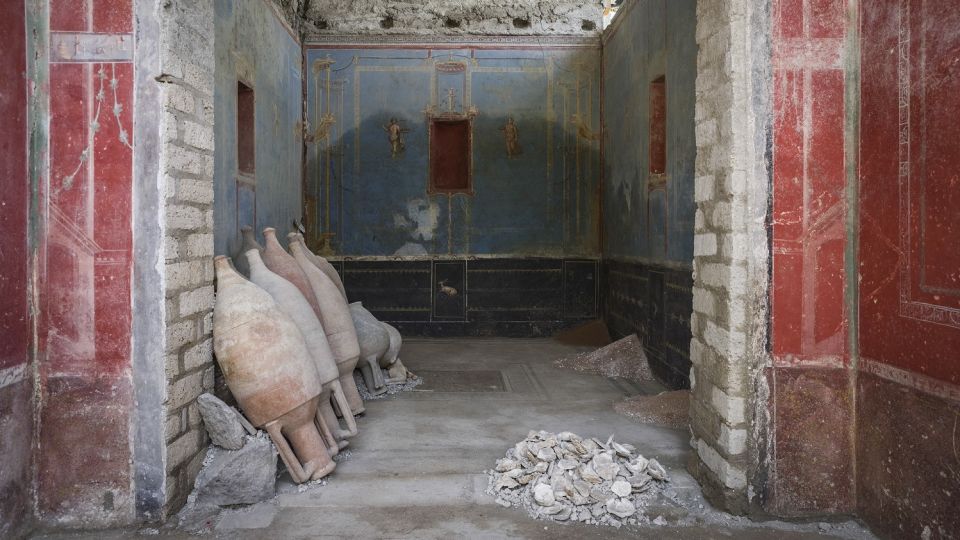Archaeologists during recent excavations in central Pompeii, Italy, unearthed an intricately decorated blue chamber interpreted as an ancient Roman sanctuary known as a sacrarium.
Italian Culture Minister Gennaro Sangiuliano visited the site on Tuesday and described the ancient city as “a treasure chest that is still partly unexplored.”
The blue color found in this new discovery is rare, with the Ministry of Culture indicating that it is generally associated with environments of great decorative importance.
According to the ministry, an in-depth analysis of the room showed that the space could be interpreted as a sacrarium or a space dedicated to ritual activities and the preservation of sacred objects.
The walls of the room feature female figures said to represent the four seasons of the year, as well as allegories about agriculture and pastoralism.
The new discovery came during excavations in the Region IX area of central Pompeiia residential area that is currently one of the most active excavation sites for new finds.
The excavations are part of a wider project to secure a perimeter between the excavated and unexcavated parts of the archaeological park, which currently has more than 13,000 excavated rooms.
The project aims to improve the structure of the area, making the “protection of the vast Pompeian heritage… more effective and sustainable,” according to the Ministry of Culture.
Other recent finds in the area include furniture from a house, a bronze building kit containing two jugs and two lamps, building materials used in renovations and the shells of consumed oysters.
Last week it was reported that archaeologists in Pompeii had made the discovery children’s sketches with violent scenes of gladiators and hunters fighting animals.
The drawings, believed to have been made by children aged between five and seven, sometime before the eruption of Mount Vesuvius in 79 AD, were found on the walls of a back room in the residential area of the archaeological park.
They showed that even children in ancient times were exposed to extreme violence.
Sign up for CNN’s Wonder Theory science newsletter. Explore the universe with news about fascinating discoveries, scientific developments and more.
For more CNN news and newsletters, create an account at CNN.com

